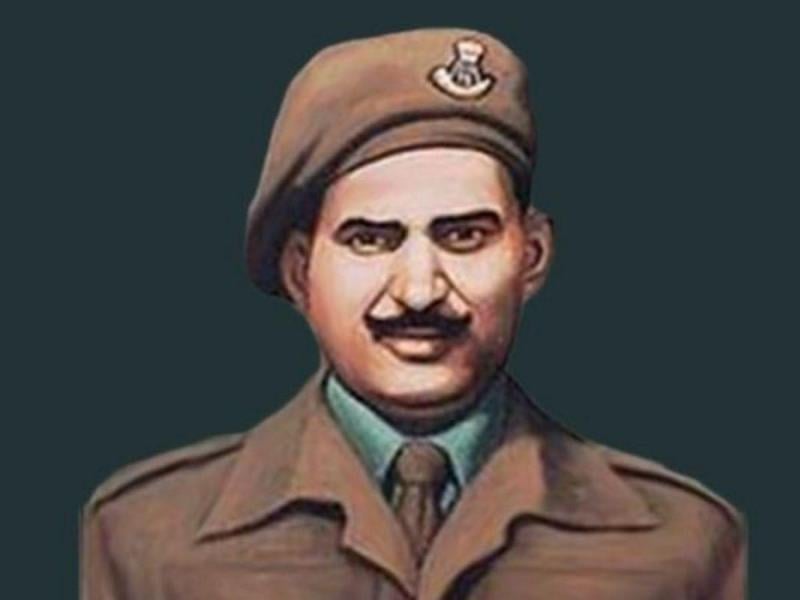PERSONAL INFORMATION
Profession: Army Personnel
Famous For: Battle of Tithwal (Jammu and Kashmir)
Date of Birth: 20 May 1918 (Monday)
Age (at the time of death): 30 Years
Birthplace: Rampura Beri, Rajputana, British India (now Jhunjhunu district, Rajasthan, India)
Zodiac sign: Taurus
Nationality: Indian
Hometown: Jhunjhunu district, Rajasthan, India
Caste: Rajasthani Rajput [1] Bravest of the Brave: Heroes of the Indian Army by Kittu Reddy
Age: 30 Years
Check Out Other Celebrities Biography
- anmol chaudhary splitsvilla 10 biography
- priyanka meher biography
- mia malkova biography
- rachit rojha biography
- shahraan dutt sanjay dutts son biography
FAMILY & RELATIONSHIPS
Parents: Father – Bhana Singh Shekhawat (Retired Subedar of the Birtish Indian Army) Mother – Tarawati Kanwar also known as Jarav Devi
Marital Status: Unmarried
CAREER HIGHLIGHTS
Awards, Honours, Achievements: • Param Vir Chakra • An oil tanker has been named after CHM Piru Singh • A roundabout at Jhunjhunu has been made by the government to honour the soldier • The Army Postal Service Corps released a cover letter to honour Piru Singh
MONEY FACTOR
Career Ranks: Lance Naik (7 August 1940) Naik (March 1941) Company Havildar Major (May 1945)
OTHER INFORMATION
Service/Branch: Indian Army
Rank: Company Havildar Major (CHM)
Service Years: 20 May 1936 – 18 July 1948 (till his death)
Unit: 6th Battalion of the Rajputana Rifles
Service Number: 2831592
Address: Rampura Beri via Pilani, Jhunjhunu, Rajasthan – 333031, India
Death Date: 18/07/1948
INTERESTING BACKGROUND INFORMATION
Company Havildar Major Piru Singh Shekhawat remains a revered figure in Indian military history, recognized posthumously with the nation’s highest gallantry award, the Param Vir Chakra. His extraordinary bravery during the Battle of Tithwal, a crucial engagement in the 1947-48 India-Pakistan War, solidified his legacy. Tragically, Piru Singh succumbed to injuries sustained in battle on July 18, 1948. His journey from a rebellious schoolboy to a celebrated war hero is a testament to his remarkable character and commitment to his country.
In his early years, Piru Singh found the confines of the classroom stifling; his educational experience was marred by a strict reprimand from a teacher following an argument with a classmate, prompting him to leave school permanently. Instead of pursuing formal education, he devoted his time to assisting his parents with household and agricultural tasks, which instilled in him a strong work ethic. Outside of chores, Piru Singh was an avid sportsman who enjoyed hunting, activities that showcased his adventurous spirit. His ambition to serve in the army was unwavering, despite facing rejection twice due to age restrictions. It was only after his third attempt that he finally enlisted as a recruit.
After completing his training, Piru Singh was initially assigned to the 10th Battalion of the 1st Punjab Regiment before being transferred to the 5th Battalion. His dedication and proficiency in military service led to his appointment as an instructor at the Punjab Regimental Center in Jhelum. In 1945, he embarked on a significant journey to Japan as part of the Allied occupational forces and returned to an independent India in 1947. However, upon his arrival, he found his homeland embroiled in the Indo-Pakistan War. He was subsequently transferred to the 6th Battalion of the Rajputana Rifles, where history would soon take a momentous turn.
During the Battle of Tithwal, Piru Singh and his Delta Company were tasked with capturing the strategically vital southern end of the hilly town. On July 18, 1948, they faced intense enemy fire from machine guns and mortars, which inflicted heavy casualties on the Indian troops. Demonstrating extraordinary courage, Piru Singh disregarded his own safety, bravely scaling the steep slopes to confront the enemy bunkers. Despite sustaining severe injuries from enemy fire and grenades, he continued to fight valiantly, clearing the first two bunkers with a bayonet and grenades after exhausting his ammunition. By the time he reached the top of the ridge, he found his entire company either dead or severely wounded.
Determined to eliminate the last enemy stronghold, Piru Singh successfully neutralized the third bunker, but not before suffering a fatal head wound. In his final act of bravery, he threw a grenade into the bunker, ensuring victory for the Indian Army. His heroic deeds not only earned the Rajputana Rifles Regiment its first Param Vir Chakra but also immortalized Piru Singh’s name in the annals of military history. To honor his sacrifice, the regimental center designated a company as Piru Company, while Tithwal Day is commemorated each year on May 23, celebrating his indomitable spirit. His war cry, “Bolo Raja Ram Chandra Ki Jai,” struck fear into the hearts of his enemies and has since become synonymous with his legacy. The profound impact of his bravery even moved the then Prime Minister, Pandit Jawaharlal Nehru, who acknowledged Piru Singh’s sacrifice in a heartfelt letter to his mother, expressing gratitude for the exemplary courage and dedication he displayed in service to the nation.
—
Note: All biographical information compiled from publicly available sources.
